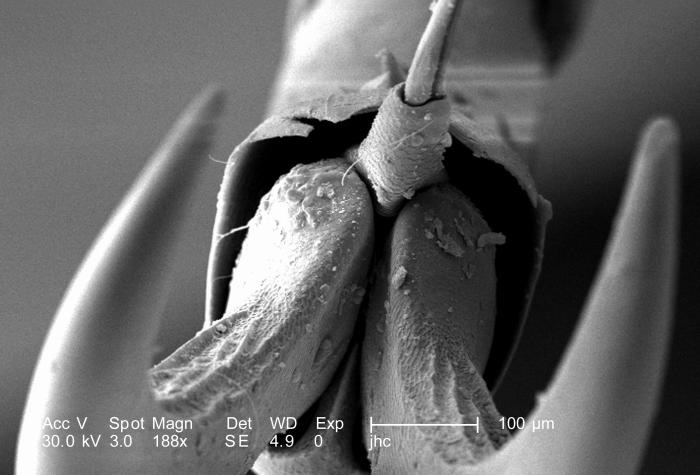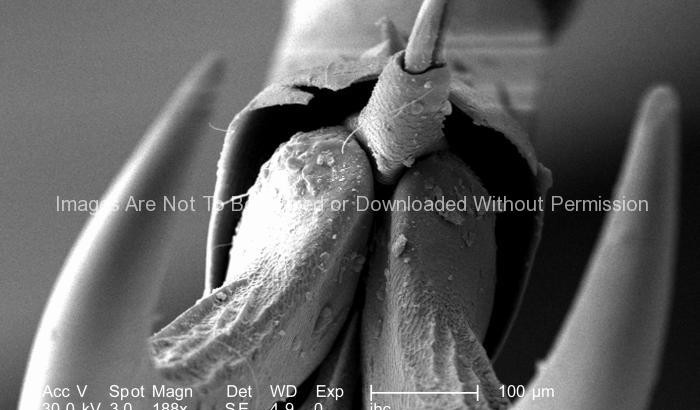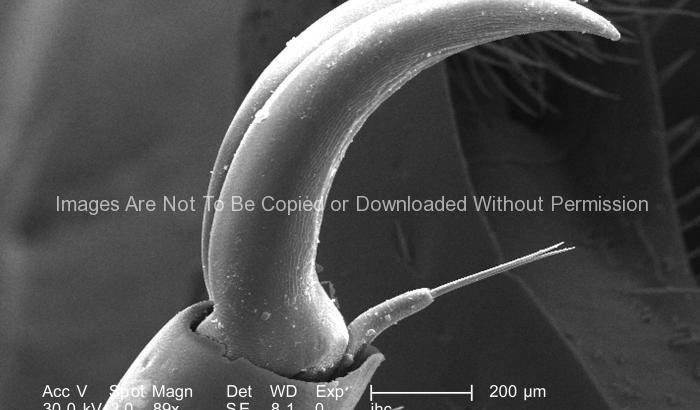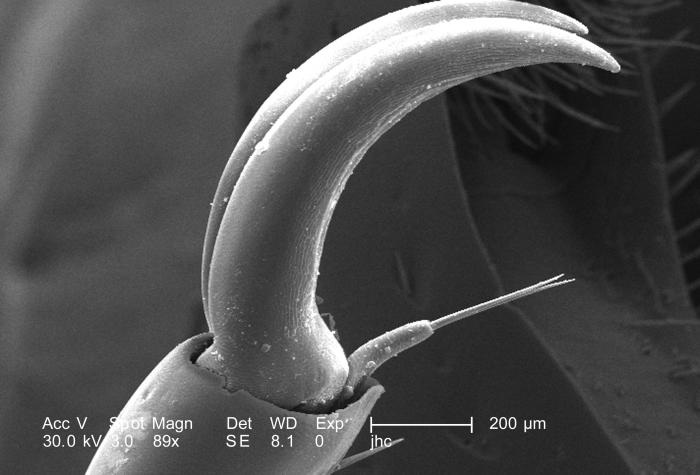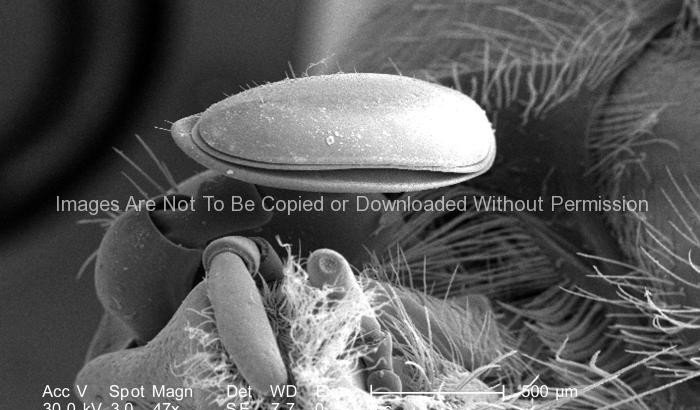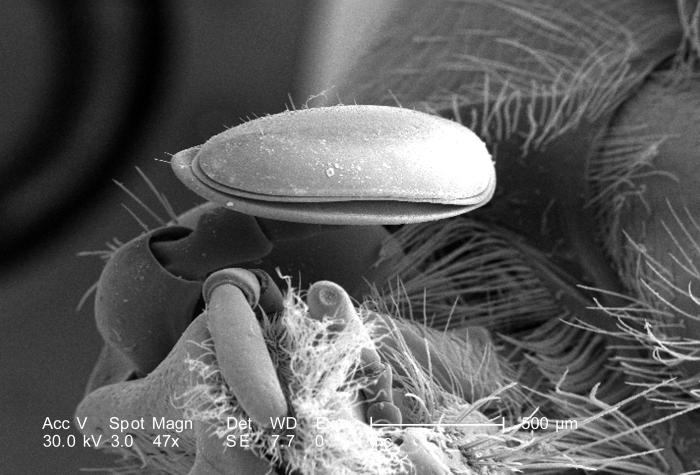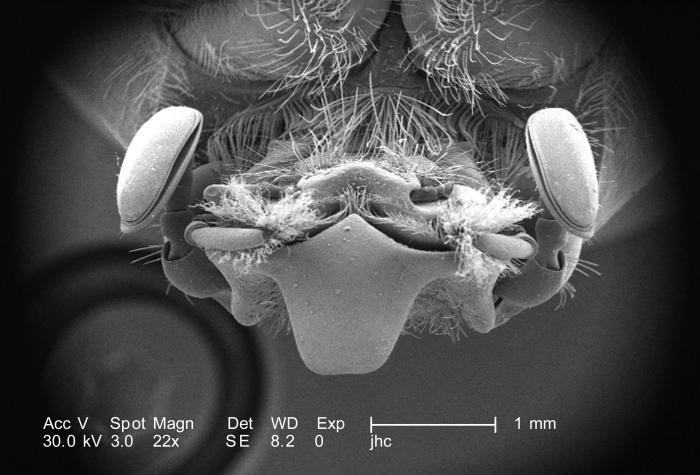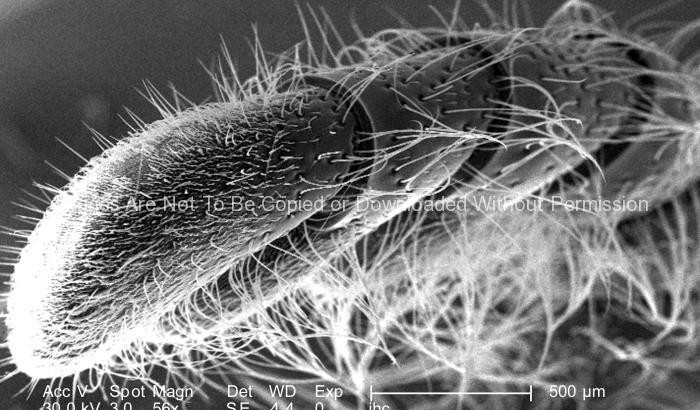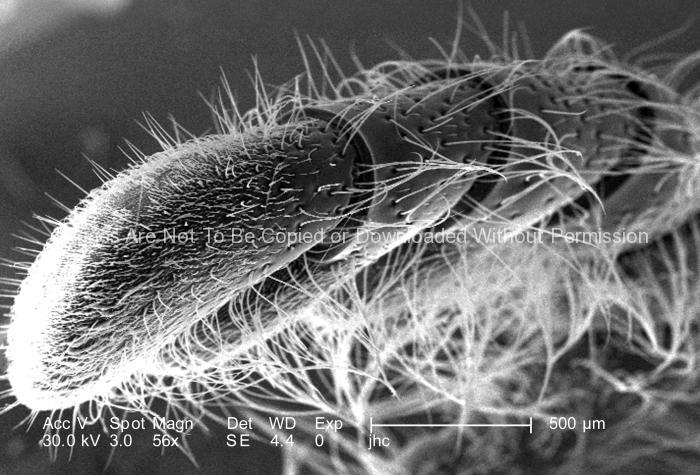Under a low magnification of 56X, this scanning electron micrograph (SEM) depicted some of the exoskeletal morphologic characteristics displayed on the head region of an unidentified beetle found deceased in the suburbs of Decatur, Georgia. In this particular view, the distal segments of the insect’s left antenna were highlighted. The antennae are composed of a proximal “scape”, a single “pedicle”, and the distal, multisegmented “flagellum”.
The scape attaches the sensory organ to the head region, and the pedicle joins the distal, jointed, flagellum to the scape. In many species of beetles, depending upon its morphology, the flagellum is further subdivided into a club, composed of the fused apical “flagellomeres”, which is what is displayed here, and the “funicle”, or “funniculus”, composed of the flagellomeres between the club and the scape.
As a member of the Class Insecta, and Phylum Arthropoda, this beetle was supported by its jointed exoskeleton, from which its Phylum, Arthro = jointed, and poda = legs, devired its name.
As arthropods, beetles possess an exoskeleton composed of chitin, which is a molecule made up of bound units of acetylglucosamine, joined in such a way as to allow for increased points at which hydrogen bonding can occur. In this way chitin provides increased strength, and durability as an exoskeletal foundation.
Note the numerous “hairs” growing up, out of the organism’s exoskeletal surface. These structures are sensorial in nature, and are known as “setae”, providing the insect with information about its environment including thermal changes, changes in wind direction, and the presence of chemicals such as poisons or pheromones. These setae are not composed of keratin, as in the case of mammals, but like the exoskeleton itself, are composed of chitin.
